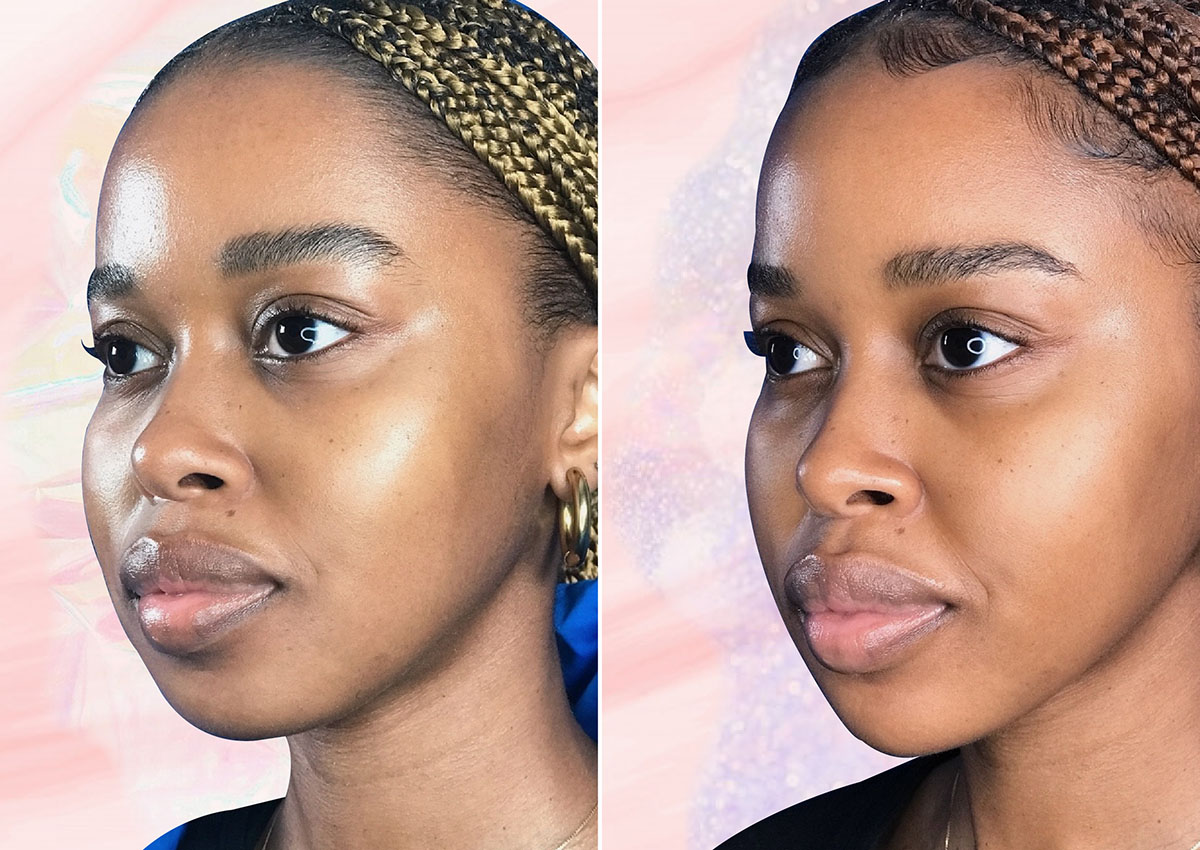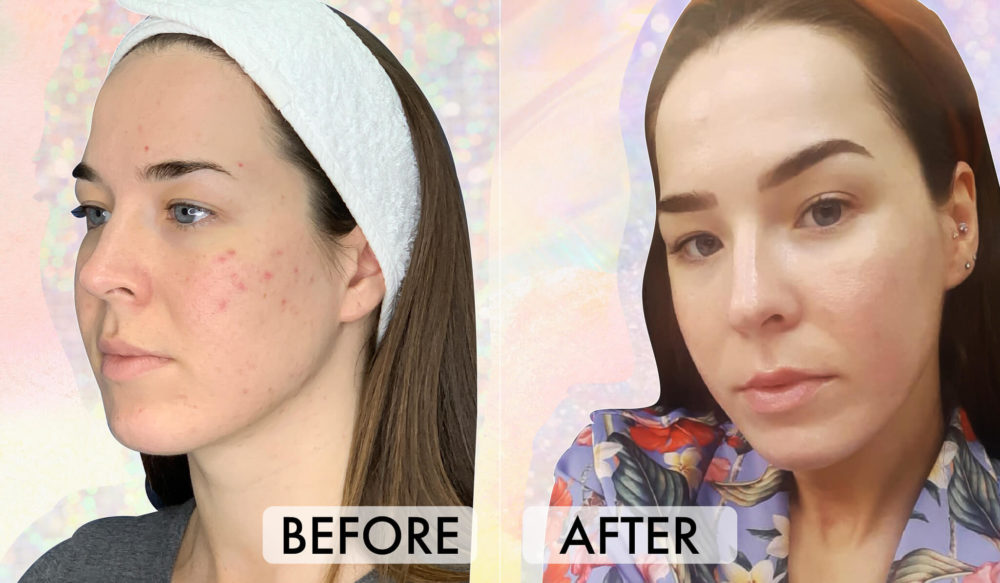What Is Filler Fatigue? Plus How to Avoid It
 via Giphy
via Giphy
It’s no secret we’ve seen a notable increase in dermal filler injections over the last several years. The global dermal filler market was valued at just over 5 billion (with a B!) in 2021, and is expected to hit 5.3 billion in 2022. By 2029, you can expect that number to almost double.
People are clearly going bananas for filler, but as wonderful as this modern-day invention is, there are some considerations to keep in mind. The biggest? A side effect known as “filler fatigue,” which cosmetic dermatologists and plastic surgeons are now starting to see in patients more widely.
What Is Dermal Filler?
Here’s the thing: Dermal filler is an incredible invention that, when used well, can instantly restore youthfulness. It can even enhance certain features (like your lips or your jawline) and create more symmetry in areas such as your chin and nose.
“Fillers are injected into the skin to smooth lines, soften creases, restore lost volume, and enhance facial contours,” explains Dr. George Bitar, a board-certified plastic surgeon in Washington, D.C. “They vary in composition so that different fillers are used in different areas of the face.”
For example, Restylane is often used for around the eyes, Radiesse can help around nasolabial folds and the jawlines, and Juvederm Volbella is typically used to enhance lips. Dr. Bitar says your injector should be well-versed in facial anatomy and understand how different types of filler can affect different areas. It’s truly a science!
 via Giphy
via Giphy
What Is Filler Fatigue?
Filler fatigue occurs when you repeatedly get too much dermal filler. This can cause skin laxity once the filler dissolves, leading to a droopy facial appearance, explains Dr. Linne Linder, a board-certified physician and aesthetic practitioner at SkinSpirit. It’s the same idea as gaining weight and your skin being unable to “bounce back.” The skin is simply stretched beyond its max.
You might think that filler fatigue isn’t something to worry about so long as you aren’t going for that “overfilled” effect. However, many people don’t actually strive for that obviously filled appearance and instead prefer a natural look.
The reality is that filler fatigue often occurs by accident. “Clients may think they are due for another treatment, and inexperienced practitioners may continue to build and add filler on top of what is already there, resulting in an ‘overfilled’ look,” notes Cara Fonteyne, vice president of nursing at SkinSpirit.
Also, filler fatigue can occur if you (and your injector) begin to lose that baseline of a natural appearance – which is very easy to do with aesthetics. Over the years, you may begin using more and more filler because you’ve lost sight of what’s natural for you.
Since filler fatigue causes a natural drooping appearance, the problem can even become cyclical.
Dr. Bitar says, “It can lead to a ‘vicious cycle’ where the patient becomes a ‘slave to filler’ to plump the empty volumes of skin they see. A cautious and skilled plastic surgeon must know when to pull back on the filler and how much time should elapse between treatments.”
 via Giphy
via Giphy
Signs of Filler Fatigue
An overfilled appearance is the biggest indicator you’re heading toward filler fatigue. Always ask your friends and family for their unfiltered opinion, make sure you’re working with a highly reputable injector, and follow your injector’s advice.
Here are some specific signs to look for:
- An appearance of extreme facial tightness. Dr. Bitar says your features might take on a stretched “joker”-like look.
- Notable bulging in areas where you received filler
- New unnatural contouring
- Puffiness that lingers weeks after your injections.
- A flat appearance around your nose and mouth.
- Inability to easily move the muscles in your face. Your speaking or eating might change, or it may feel uncomfortable to do these things.
- Your lips won’t close all the way.
- Sagging or drooping skin when the filler begins to dissolve.
Posts You'll Love:
How to Prevent Filler Fatigue
Filler fatigue is on the rise, but you can avoid it and still enjoy your injectables. Here’s how to prevent filler fatigue from happening to you:
Work With Only the Best
The best way to prevent filler fatigue is to work with a board-certified plastic surgeon, dermatologist, or experienced injector with a medical degree (nurse or physician assistant). This person should have a reputation for prioritizing a natural look and have a robust portfolio of patient images to prove it.
“Ask to see recent pictures of filler patients, and be wary of results that look obvious,” notes Dr. Bitar. “Filler should look subtle – not like a patient’s face has been plumped. Natural contours of the face should still be visible.”
Stay on a Regimented Schedule
Filler lasts approximately six to 12 months, so be wary of any injector encouraging you to come more frequently than that. It’s possible they are either unaware of this basic timeline for injectables, or they may have profits on their mind.
Take Before & After Images
 We love this natural and harmonious filler result of one of our team members. Check out Zipho’s filler story here.
We love this natural and harmonious filler result of one of our team members. Check out Zipho’s filler story here.
“Before and after photos are really important to document where you started and where you ended in your filler journey,” says Fonteyne. Your injector should do this, but also take pictures along your journey, as well.
Supplement With Different Treatments
Dermal filler isn’t the only way to a more youthful appearance. For example, Botox can help smooth fine lines and wrinkles around your eyes and forehead, and treatments like microneedling, RF, and lasers can boost collagen (check out these at-home devices). Dr. Bitar says, “It is vital to seek a provider with sufficient tools in their arsenal to provide a desired aesthetic outcome instead of merely using filler.”
Another good point that Dr. Bitar makes is that we all reach an age where minimally invasive treatments might not offer as much bang as we’d like. In that case, if rejuvenation is something important to you, then you can look into surgical lifts.
Ways to Fix Filler Fatigue
If you do suspect you’re dealing with filler fatigue, there are some steps you can take to help get back to your “old self.”
First, if you notice you’re overfilled and it’s not due to post-injection inflammation (which should subside in a week or two), it’s smart to have some or all of the filler dissolved.
“Dissolving an overfilled area with enzymatic injections/hyaluronidase treatments is necessary to get back to baseline,” says Dr. Linder. “The procedure to remove hyaluronic acid-based fillers takes about 20 to 30 minutes, and multiple sessions may be required depending on how much product is being dissolved and how many sessions of filler you’ve had in the area.”
She adds that when you dissolve the filler in your tissue, you will notice volume loss in the areas you dissolve and possibly some dehydration of the tissue. This is temporary if the overfilling hasn’t been a serial issue. Dr. Linder says, “Your natural occurring hyaluronic acid will be replenished over a few weeks and things should bounce back.”
If the filler is non-dissolvable, then it must be surgically removed. And in more extreme cases of filler fatigue where skin sagging is permanent, it’s best to discuss tightening options with a trusted aesthetic medical professional. Dr. Bitar says that skin tightening treatments, such as Morpheus8 or Ultherapy, can help create a lifted look.
Going overboard with skin care treatments can happen. Check out what can happen when you get a little too much of other treatments, like exfoliation, lasering, and Botox.























Leave a comment